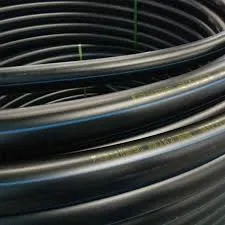Sep . 06, 2024 07:11 Back to list
PVC Irrigation Pipe Sizes - Comprehensive Guide for Efficient Irrigation Solutions
Understanding PVC Irrigation Pipe Sizes
In the field of agriculture and landscaping, efficient irrigation is crucial for the health of plants and the optimal use of water resources. One of the most commonly used materials for irrigation systems is polyvinyl chloride, or PVC. PVC irrigation pipes are favored for their durability, affordability, and ease of installation. However, selecting the right size of PVC pipe is vital for maximizing flow rates and ensuring effective irrigation. This article will explore the various sizes of PVC irrigation pipes available and their implications for effective water management.
Why Size Matters in PVC Irrigation Pipes
The size of an irrigation pipe plays a critical role in determining the flow rate within the system. A pipe that is too small can lead to increased pressure, resulting in inefficiencies and potential system failures, while a pipe that is too large may reduce water velocity, leading to sedimentation and other issues. Therefore, understanding the standard sizes of PVC irrigation pipes, which are typically measured in diameter, is essential for designing a functional irrigation system.
Standard Sizes of PVC Pipes
PVC irrigation pipes are commonly available in various diameters, ranging from ½ inch to 6 inches and sometimes larger
. The most frequently used sizes in agricultural applications include 1 inch, 1.5 inches, 2 inches, 3 inches, and 4 inches.1. ½ Inch and 1 Inch Pipes These smaller pipes are often used in residential irrigation systems or for limited applications such as drip irrigation. They are suitable for delivering water to small gardens or planters, ensuring that the water reaches the root systems without wasting any resources.
pvc irrigation pipe sizes

2. 1.5 Inch and 2 Inch Pipes These sizes are more versatile and can be utilized for both residential and light commercial applications. They are highly effective in transporting water efficiently over short to medium distances and are commonly seen in sprinkler systems and small agricultural operations.
3. 3 Inch and 4 Inch Pipes These larger diameters are better suited for medium to large-scale irrigation projects. They can handle greater water volumes and are often used in conjunction with mainlines in agricultural fields or extensive landscaping projects.
Choosing the Right Size
Selecting the correct pipe size depends on several factors, including the type of crop, the irrigation method (such as drip or sprinkler), the distance over which water must be transported, and the volume of water available for irrigation.
Moreover, it is essential to calculate the required flow rate for your irrigation system. After determining the flow rate, the appropriate pipe size can be established using hydraulic calculations, which consider factors such as pipe length, the pressure drop, and the layout of the irrigation system. Consulting with irrigation specialists or agricultural engineers can provide invaluable insights to ensure that the chosen pipe size meets your specific needs.
Conclusion
In summary, understanding the sizes of PVC irrigation pipes is critical for optimizing water delivery systems in agricultural and landscaping applications. By choosing the appropriate pipe size based on specific requirements, users can enhance the efficiency of their irrigation systems, conserve water, and ultimately contribute to healthier plant growth and improved yields. Investing time in the initial stages of planning will pay off in the long run, as a well-designed irrigation system is essential for sustainable agricultural practices.
-
Durable PP Rigid Sheet: Lightweight, Chemical Resistant Solutions
NewsAug.21,2025
-
PVC Grey Sheet for Extraction: Chemical Resistant & Durable
NewsAug.19,2025
-
Durable PVC Pipe Fittings for Plumbing & Irrigation Needs
NewsAug.18,2025
-
HDPE Steel Belt Reinforced Spiral Corrugated Pipe | High Strength
NewsAug.17,2025
-
HDPE Pipe Fittings: Durable, Leak-Proof Solutions
NewsAug.16,2025
-
Premium CPVC Sheet: High-Temp & Chemical Resistant Solutions
NewsAug.15,2025

